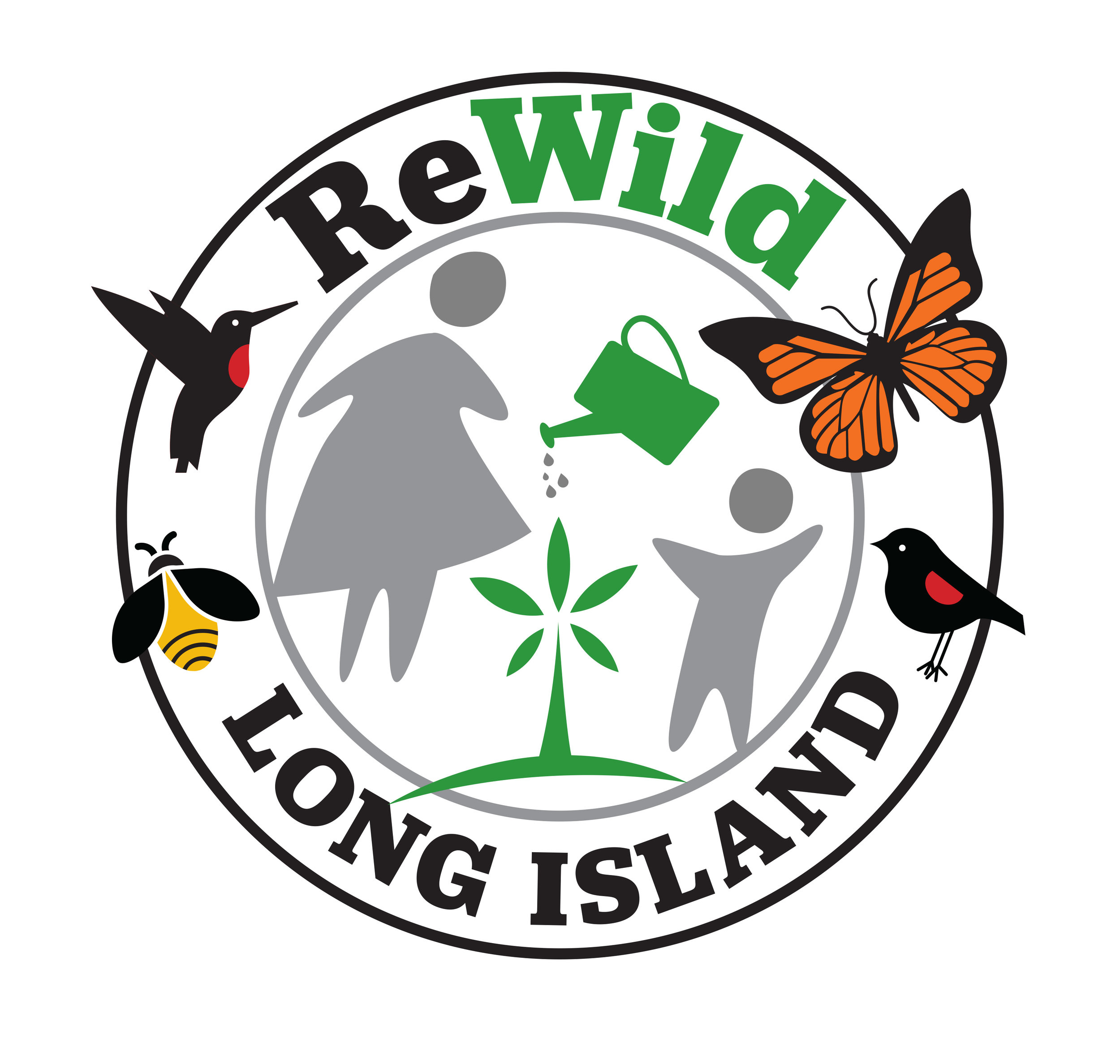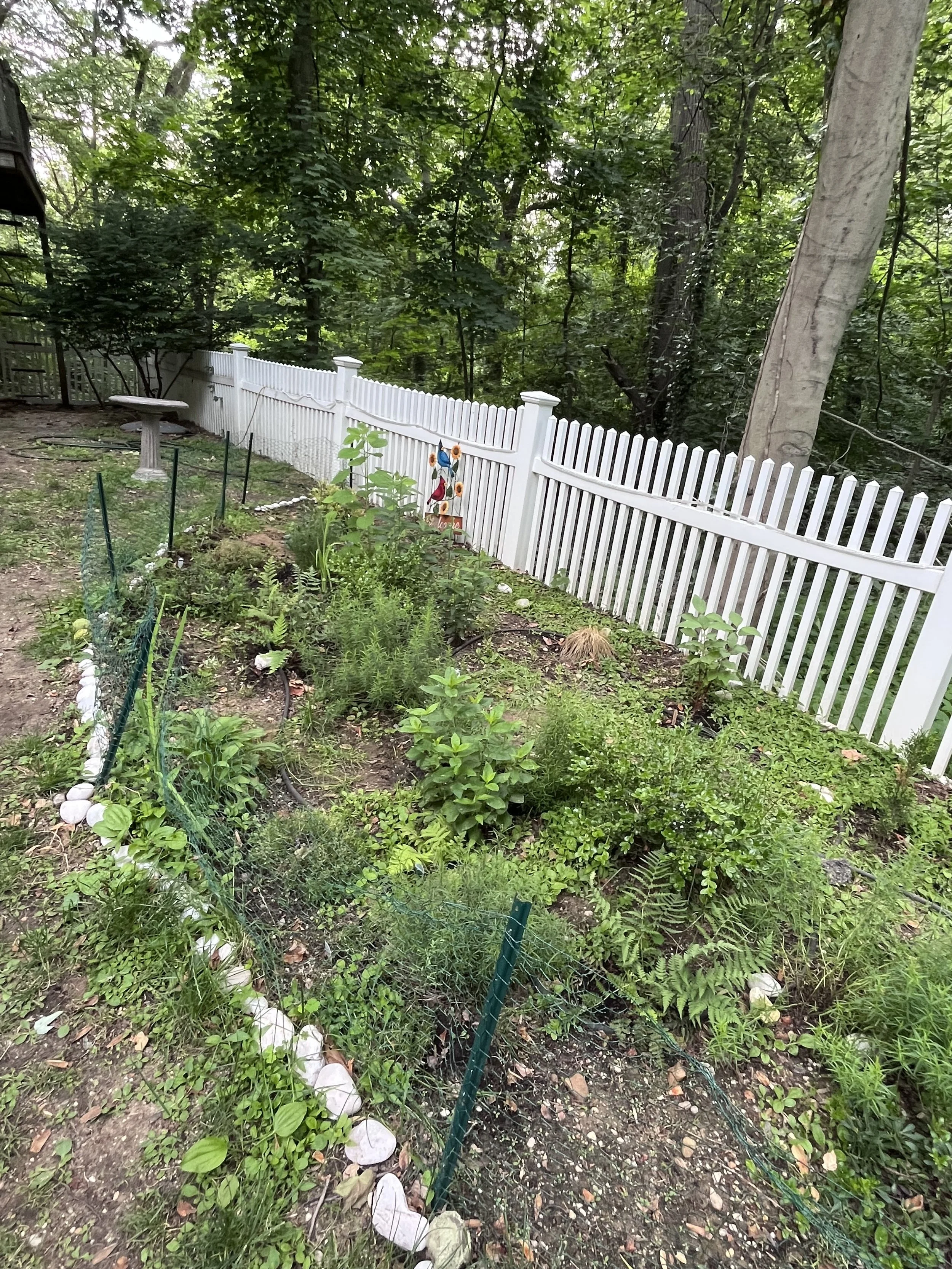Garden With a Purpose: A Mindful May Observation by Perry Rubens
By Perry Rubens
Asmonia Hubrichtii (Hubricht’s Blue Star) from Perry’s Garden
I am a junior at Paul D. Schrieber High School in Port Washington, and I have always enjoyed gardening. Every Mother’s Day, my family would plant annuals and give the deck boxes new soil. I appreciated the aesthetics the annuals added, but I would shift my focus to my vegetable garden soon after planting, being that it gave me a real reward in the form of food. Two years ago, I learned about the importance of native plants, and how our local pollinators need them to feed themselves and support our ecosystems. I was intrigued by the idea of practical flowers. I was inspired to create a native plant garden after participating in the ReWild Long Island Summer Program to Fight Hunger and Climate Change. When I first heard about ReWild’s program in a local newsletter, I was really attracted to extending my passion to a community level. I applied and became an intern, and the following summer I was a mentor. It has been rewarding to work with other like-minded people and to contribute to a project that helps to feed others.
My backyard recently needed repair and the machinery brought in created damage. I took the opportunity to draw designs for the yard and add new garden beds, replacing some of the lawn. I took into account the sun, water, and soil conditions to select what plants to put into the backyard. The space has partial sun and is slightly moisture retaining, making it accommodating for plants that thrive in different conditions, as long as they don’t need dry full sun. I researched which native plants would grow there, and last summer I started my garden. I have been adding plants and have seen amazing growth. It is incredible to see the changes and learn what works and what does not. This summer will be my second summer as a mentor at Rewild and I am looking forward to contributing more, helping to guide the new interns, and learning more about ways to foster my native garden.
Perry’s garden in May
This May, I first saw the native perennials I planted the previous fall. The spring blooming creeping phlox and bearberry were the first to bring color to the garden with their white and pink flowers. The summer blooming hydrangeas and phlox paniculatas have followed by growing over a foot since late April. With all the growth of the foliage came insects. I have seen two tiger swallowtail butterflies flying around which I hope will return for later blooms. Unfortunately, two of the cardinal flowers which have been thriving became infested with aphids, and I decided to dig them up and put them in isolation. I have also seen bumblebees buzzing through the yard occasionally. I noticed the bumblebees were not only visiting our native plants, but also the grove of invasive barberry which sits on the hill a few meters away from the wildflowers. It occurred to me that bumblebees, while pollinators, are not all native.
Unlike the barberries, a different invasive shrub which does not seem to provide any positives has been encroaching on the yard. Along the back fence a number of Japanese viburnum have shot up multiple feet over the past two years. Not only are they leaning into the garden, shading the native plants, but they have been flowering profusely. I have seen no insects, birds, or squirrels come to eat their berries. I plan to get a pair of loppers and fell them this season.
Other weeds have quickly sprouted too, making me regret not mulching in the fall. One of the weeds is actually the native jewelweed. It first showed up a year or two ago as just a couple of plants producing canopies of striking orange flowers, so I left them. This spring I noticed there are no longer just a few; they have now formed a dense carpet where they first appeared and are also spreading in the forest behind the yard. While they introduced themselves to the yard rather aggressively, I am going to let them grow into a cohesive clump and provide for the insects. I figured if it is native to Long Island and popped up itself, is there anything more appropriate than volunteer jewelweed in the garden? Since weeds seemed to thrive in the yard, I saw that as a sign that the soil was rich with nutrients and decomposers, but as I filled the new native garden bed, I noticed it was actually fairly sandy and rocky. Not only did it not feel pleasant, but I encountered few to no worms, insects, or even rotting objects. Nonetheless, when I put in new plants, I fill the holes with compost mixed into the soil, and so far they are growing amazingly. Overall activity in the garden is booming, and even though not everything is perfect, I know I can improve the practical, environmental, and visual attractiveness to the yard.
Author Bio:
Perry is a junior at Paul D. Schrieber High School in Port Washington. He has always enjoyed gardening. He appreciated the aesthetics the annuals added, but mainly focused on the vegetable garden since it gave him a real reward in the form of food. Two years ago, he learned about the importance of native plants, and how our local pollinators need them to feed themselves and support our ecosystems. He was intrigued by the idea of practical flowers and inspired to create a native plant garden after participating in the ReWild Long Island Summer Program to Fight Hunger and Climate Change.
Perry’s Plant List:
Arcostaphylos uva-ursi (bearberry)
Cornus sericea (red twig dogwood)
Dryopteris marginalis (marginal wood fern)
Huchera americana (huchera/American alumroot)
Hydrangea arborescens (smooth hydrangea)
Iris veriscolor (blue flag iris)
Matteuccia struthiopteris (ostrich fern)
Pesntemon digitalis (foxglove beardtongue)
Phlox paniculata (garden phlox)
Phlox subulata (moss phlox)
Thuja plicata (green giant arborvitae, native to Western US)
Asmonia Hubrichtii (hugbricht’s bluestar)
Pycnanthemum tenuifolium (narrow leaf mountain mint)
Coreopsis lanceolata (lace-leaved coreopsis)
Non-natives:
Boxwood
False Holly




